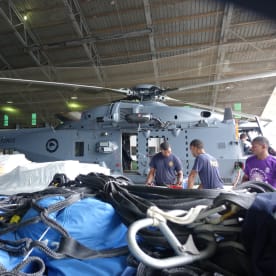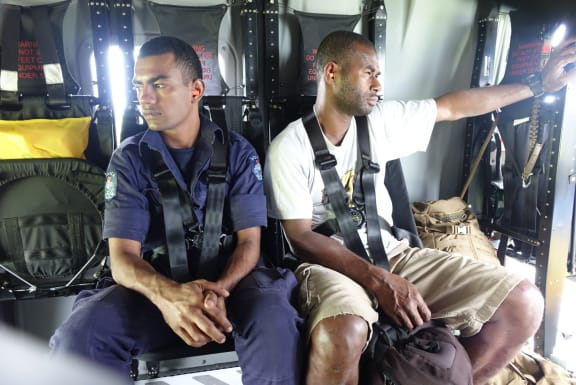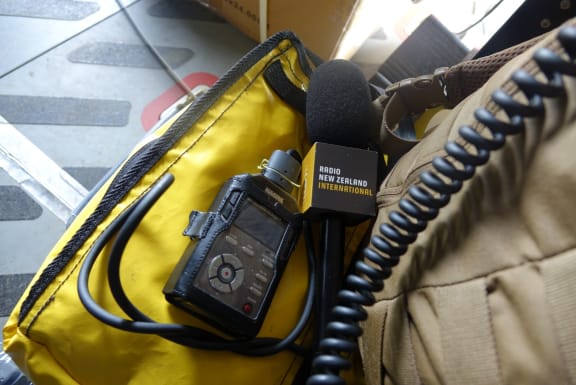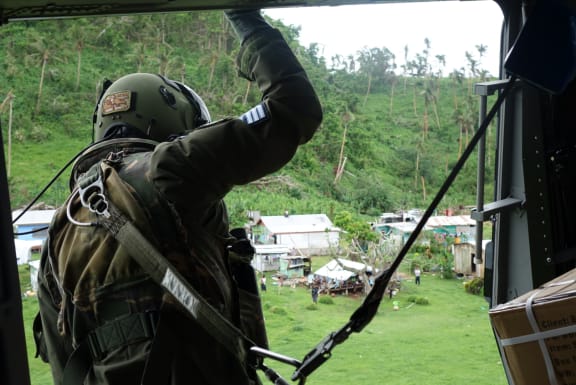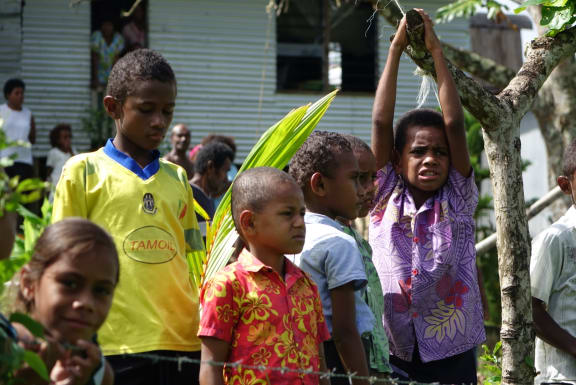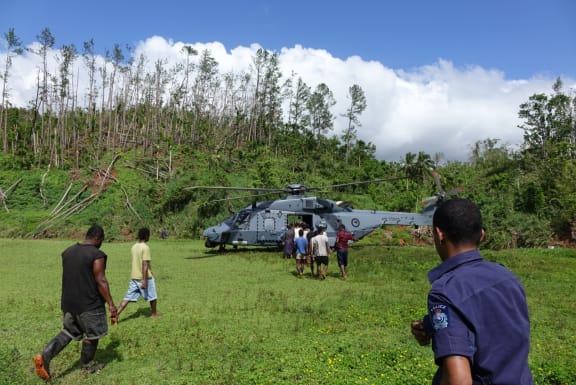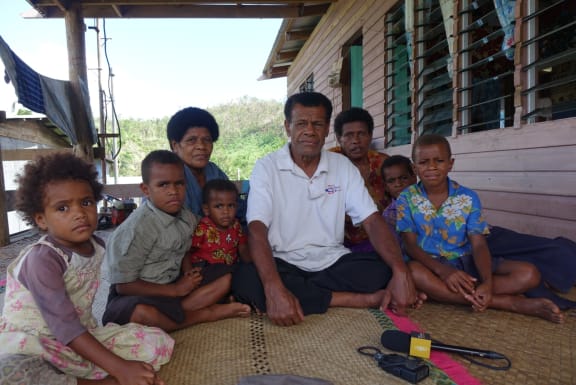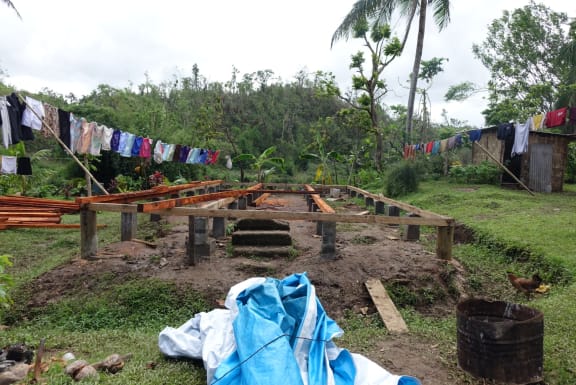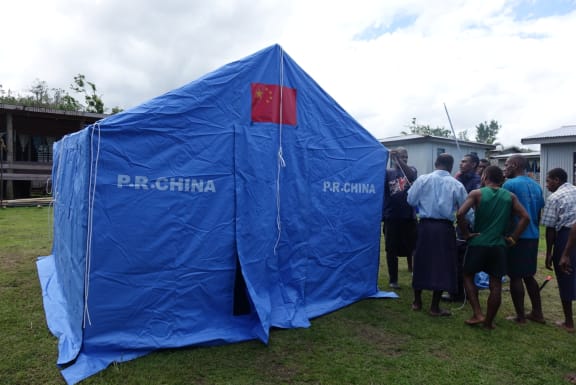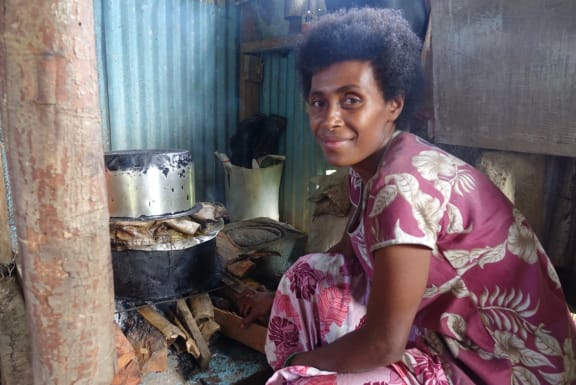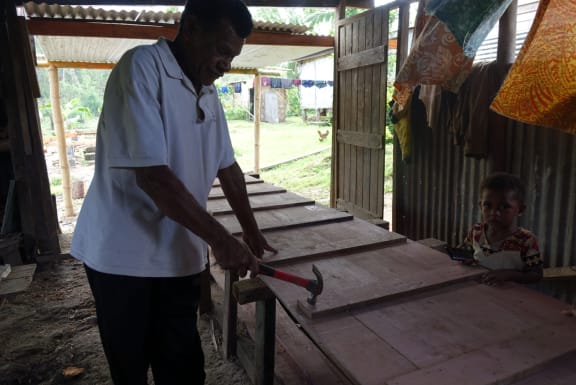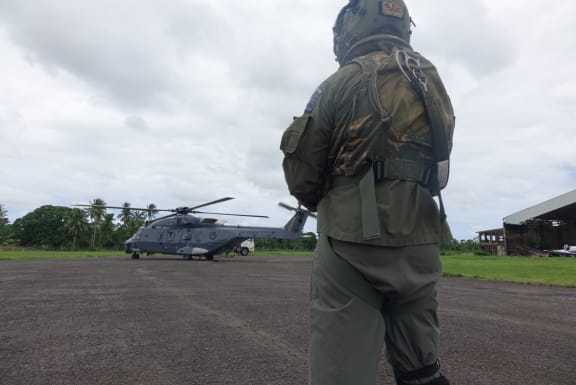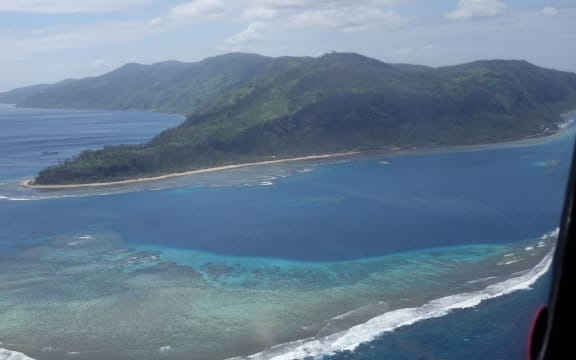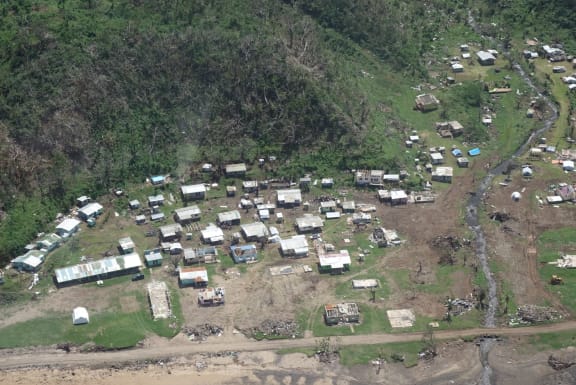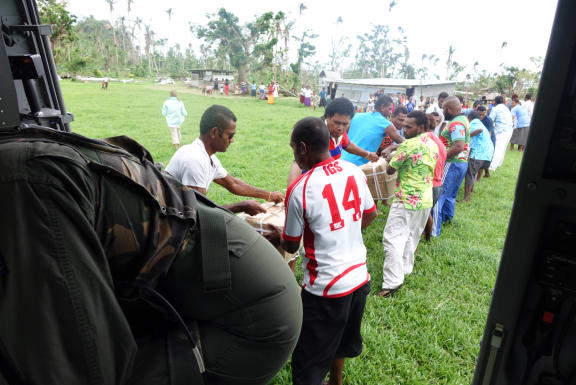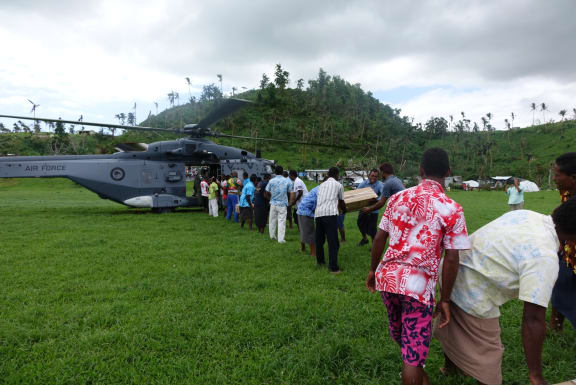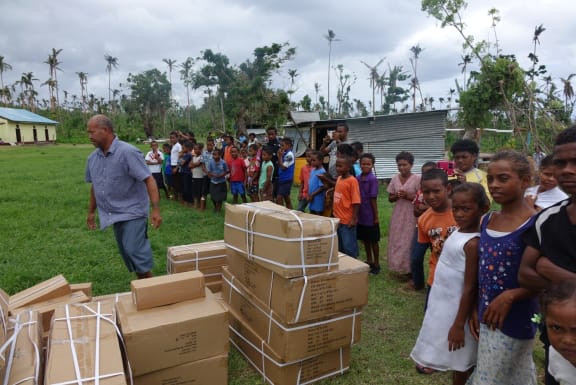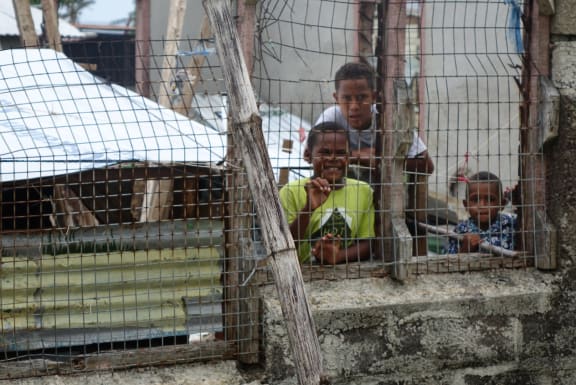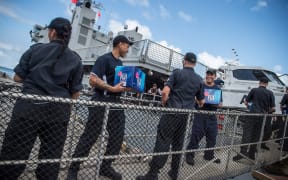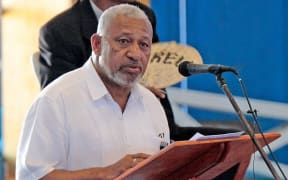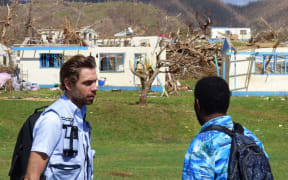The people of Nawaisomo are used to helicopters now.
But when they hear the chacka-chacka-chacka noise coming from the distance, they still down tools, grab their babies and rush to the open patch of land on the edge of this remote highland village on Fiji's main island, Viti Levu.
Sally Round hops onboard a NH90 aircraft to deliver aid to remote parts of Fiji.
The New Zealand Defence Force NH90 carrying tents, a young policeman and a judicial official roped in to do disaster relief, is the twelfth such aid run to Nawaisomo since Cyclone Winston hit with massive force nearly two months ago.
More than a third of Fiji's population, many in far flung islands and remote areas like this, have been affected in some way.
The Fiji government has been leading the relief effort, with the help of the United Nations, aid agencies and countries like New Zealand and Australia which have deployed hundreds of troops, and assets like the Air Force NH90 and the Navy ship HMNZS Canterbury.
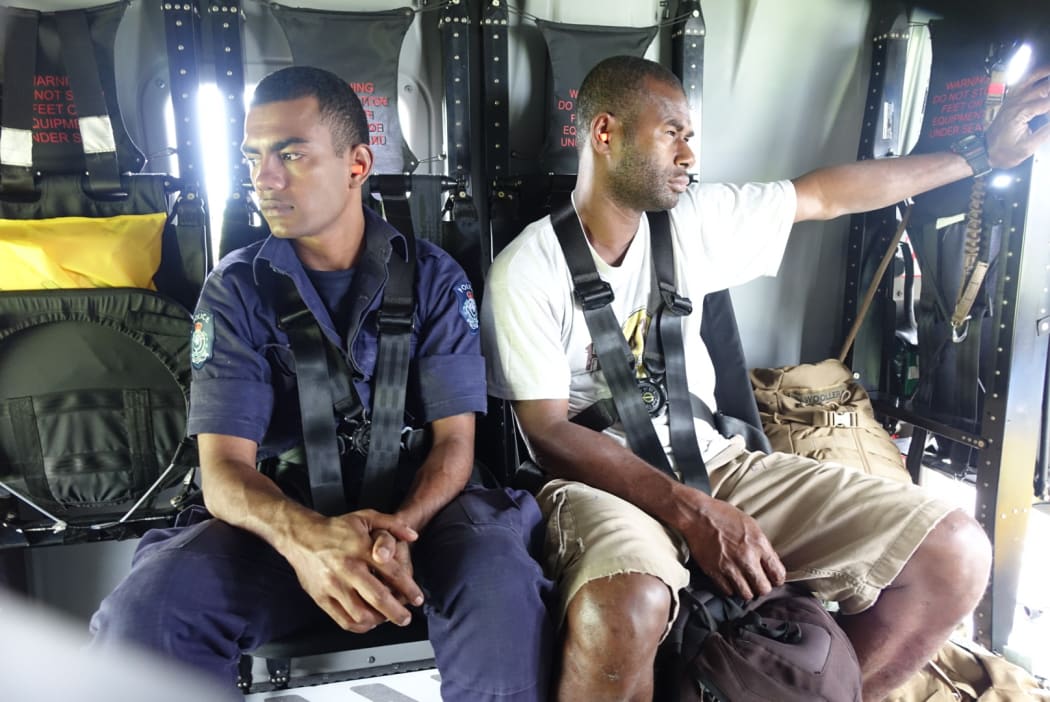
Livia Rasomai (L) and Setoki Qalubau are accompanying the aid and will show the villagers how to put up the tents Photo: RNZI Sally Round
A NZDF spokesman Logan Vaughan said New Zealand will wind up its operation in Fiji at the end of this week.
"Initially a lot of the aid we took in, we took in from New Zealand and Australia and the places nearby. Lately countries like China and other countries have been giving a lot of aid also and we're just getting that out there as the second or third rotation of aid out to these outlying places," he said.
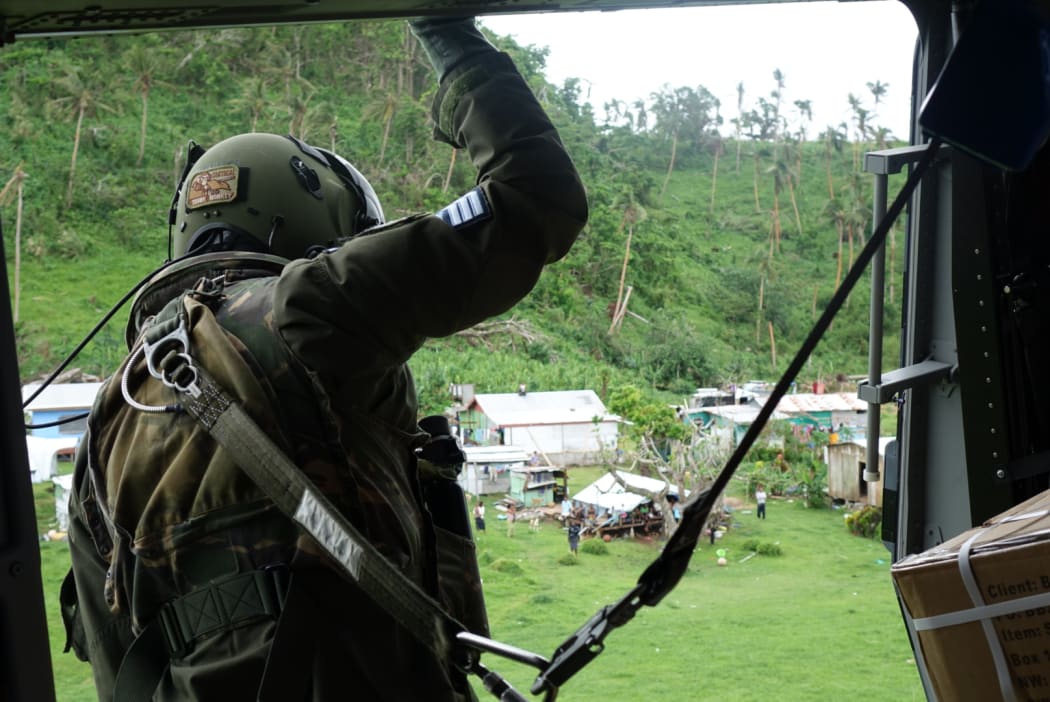
The NH90 hovering over Navakawau, Taveuni, ready to land and drop in aid Photo: RNZI Sally Round
Nawaisomo is the first stop for Flight Lieutenant Peter Familton and his crew today.
They have been making up to six drops a day and there is a competition going among the flight crew over who has clocked up the most flying hours during the Fiji aid effort.
"The village that we're taking the stores to in Taveuni, I know that over 70 percent of the houses there were affected and this is the first chance that they've had to receive any stores, so yeah, it's pretty important that we get them up there," said Flight Lieutenant Familton.
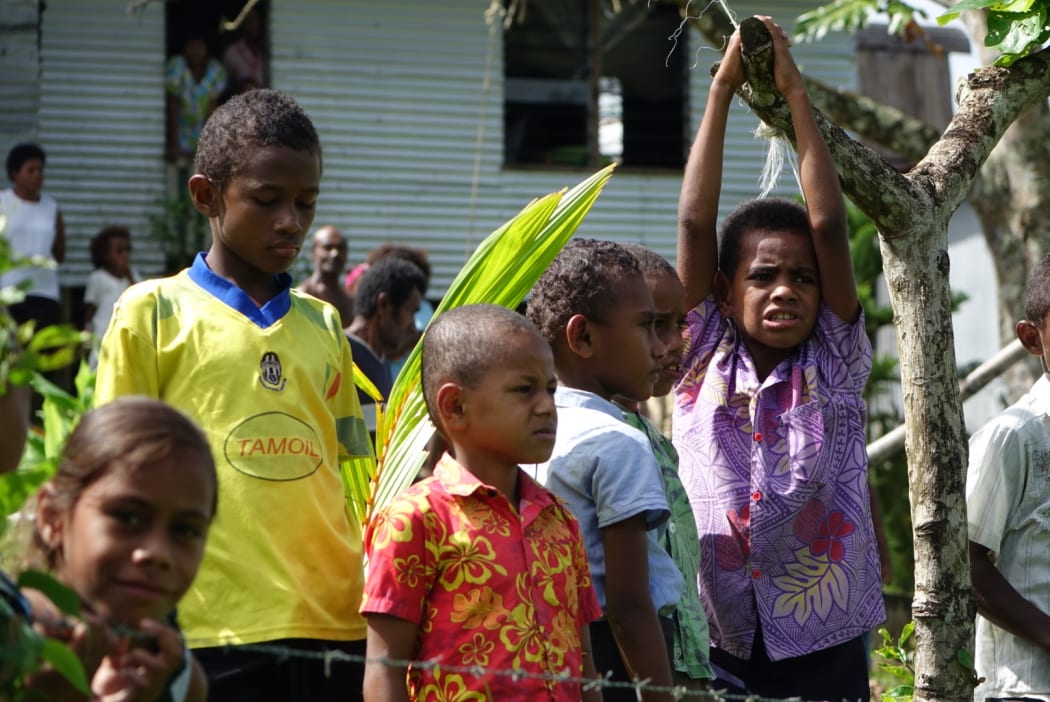
The children of Nawaisomo in the Fiji highlands are getting used to choppers landing in their remote village Photo: RNZI/Sally Round
In Nawaisomo, the goverment workers Setoki Qalubau and Livai Rasomai have half-an-hour on the ground to show the villagers how to erect the tents before the NH90 has to depart again.
As they set to work, the village chief Ratu Waisea Drakusiwale invites me to sit down cross-legged on his verandah which overlooks the other houses and surrounding hill country.
Ratu Waisea was a scrub-cutter in Whanganui, New Zealand in the early 1980s and we chat for a while, but the conversation soon turns to the cyclone, the damage it has wrought and how the village is managing.
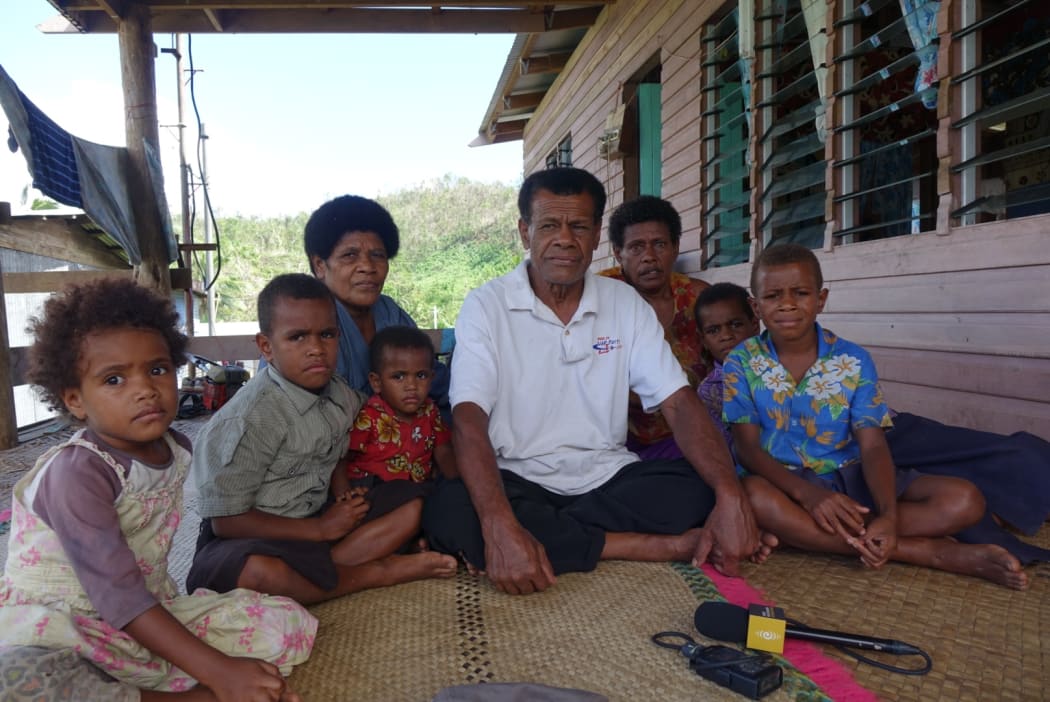
The chief of Nawaisomo Ratu Waisea Drakusiwale with villagers Photo: RNZI/Sally Round
The trees are still ragged and torn but the houses look to have been repaired and some have shiny new roofs.
He said about a dozen houses out of seventy-odd were damaged and some were write-offs.
"This is the worst hurricane I have seen in all my life. I am 68-years-old and it is the worst, very frightening," he said, pointing down under the house where people huddled during the hours of ferocious winds.
He said the children are always excited to see the helicopters arrive and there is a chorus of chuckles from the women sitting nearby when I ask if the aid drops have become too "everyday" now.
After Winston's damage, only one way out
Nawaisomo can only be reached by river boat and a long and bumpy drive to Suva.
Ratu Waisea said the village had become even more isolated since Winston as his boat was washed away when the river flooded.
The only transport to the road end now is by bilibili, a traditional style of raft crafted from bamboo or other local materials.
He said the newly-arrived tents will be useful in case there is another cyclone but he said the biggest problem is a lack of food.
He leads me to a view of the hills in the distance where the staple cassava crop was planted.
"All has been devastated in this cyclone, all the cassava, taro, everything gone," he said. "Some (green) vegetables are coming up now, but food (root vegetables) it's going to take seven, eight months."
He said the crops dug up after Winston have gone off.
"It's like a candle if you boil it."
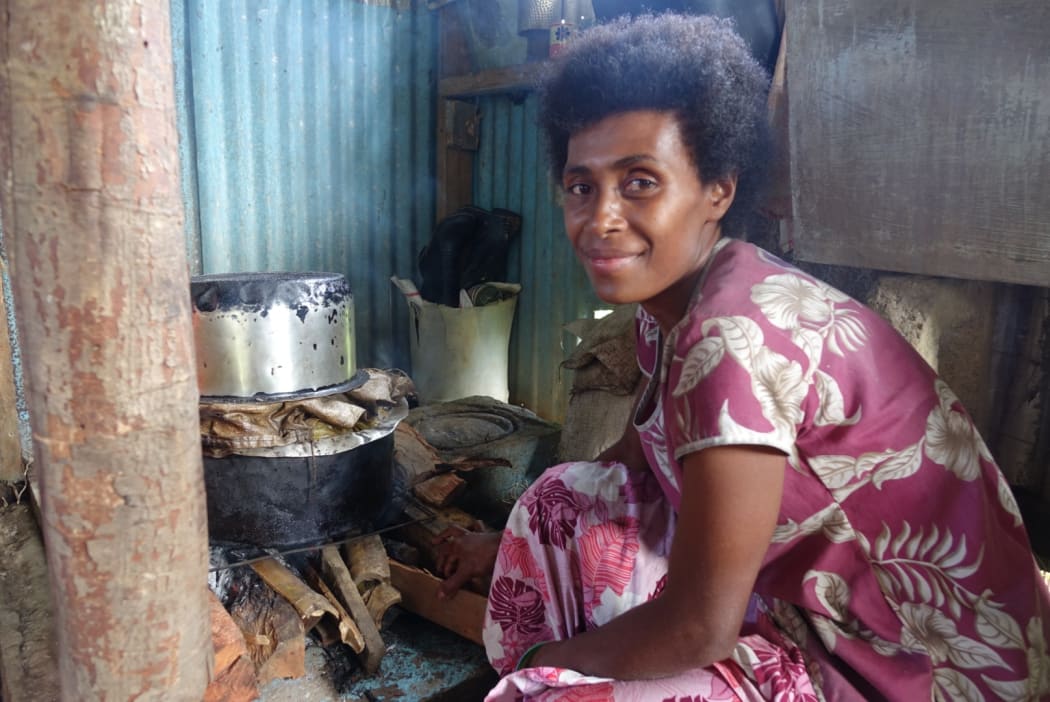
A Nawaisomo woman cooking. Food is the biggest problem now according to the village chief. Photo: RNZI/Sally Round
Ratu Waisea said they are managing and still have three meals a day but he is obviously worried about the future.
Some households are starting to run out of the government-issued rations consisting of rice and other staples.
One of the small children has been sick and he had to transport her out to hospital. He suspects it was to do with the lack of food.
Drinking water, toilets and general sanitation have been a big concern throughout the country after water supplies and toilets were damaged by Winston.
But the Naiwaisomo villagers say there has only been a little bit of diarrhoea and the water engineers who came in on another aid run have made sure the water is safe to drink.
It is time to head back to the helicopter but Ratu Waisea wants to show me the new boat he is finely crafting from the timber he has managed to have brought up from Suva.
It is urgently needed so he can get to the capital and relay the village's concerns and needs for the future especially as mobile networks have been patchy.
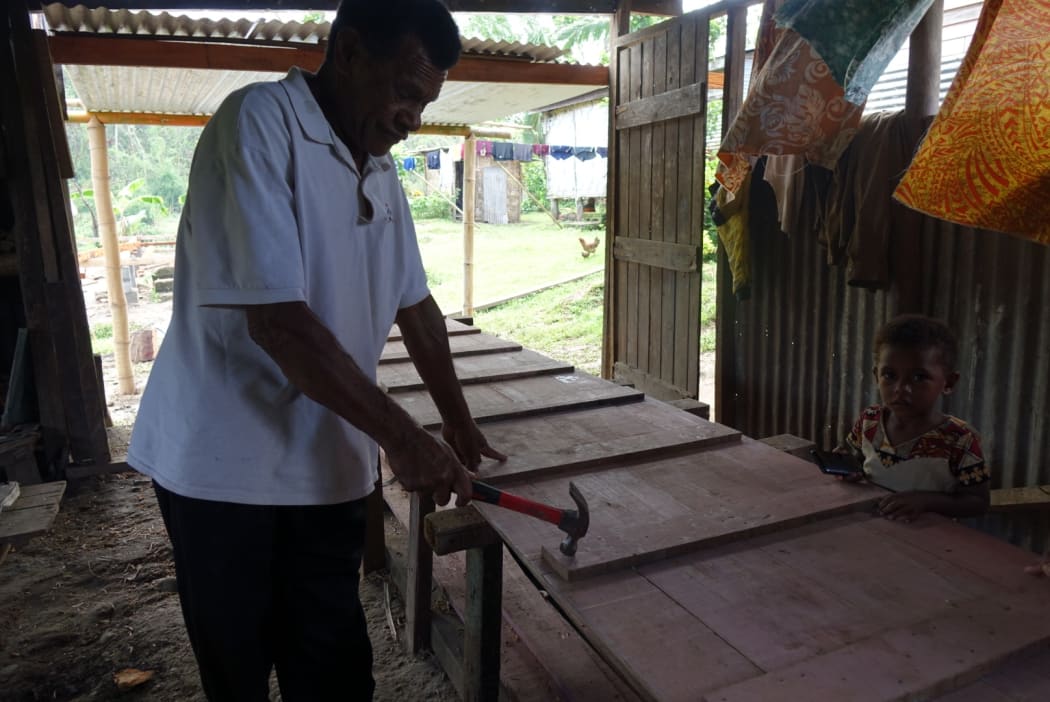
Nawaisomo village chief Ratu Waisea Drakusiwale is building a new river boat. His last one was washed away in floods Photo: RNZI/Sally Round
I join the rush to the chopper as its blades start up again but Ratu Waisea wants me to pass on a message to the authorities about the need for more food.
I assure him I will pass on the message.
"If you can please. We need food for 300 people. It's very important."
When I get back I contact the provincial authorities who confirm they are aware of the village's needs.
It has already received seven loads of government-supplied rations and they say more food is on its way.


